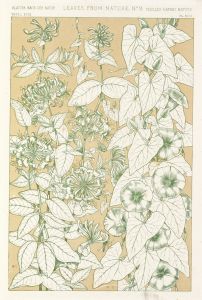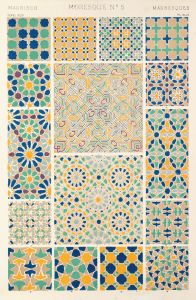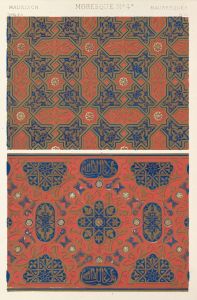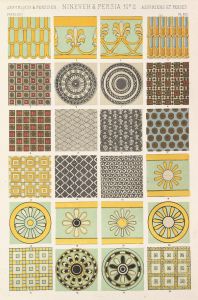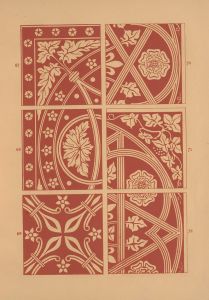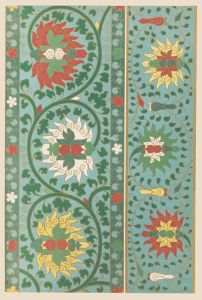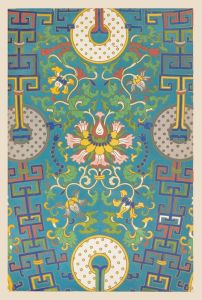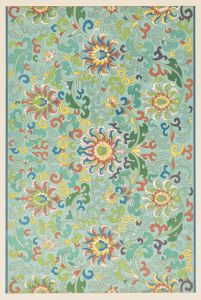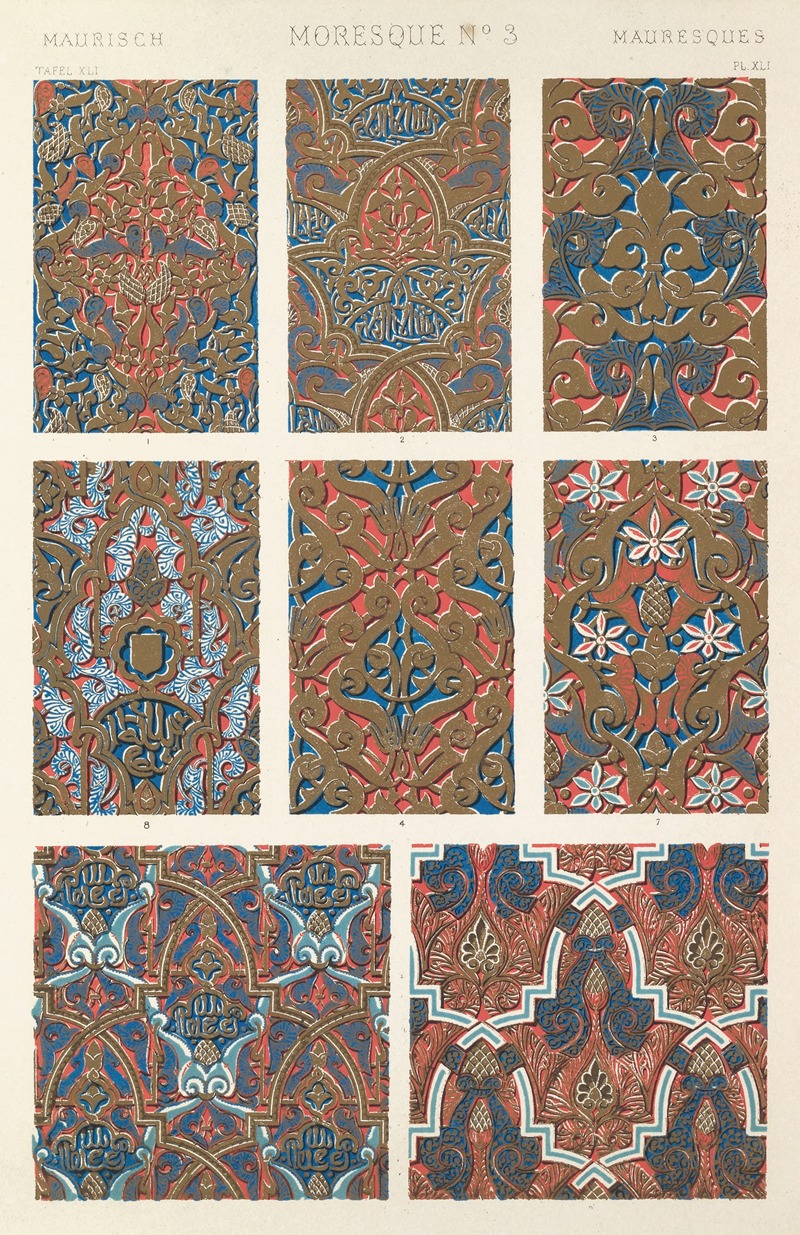
Moresque No.3
A hand-painted replica of Owen Jones’s masterpiece Moresque No.3, meticulously crafted by professional artists to capture the true essence of the original. Each piece is created with museum-quality canvas and rare mineral pigments, carefully painted by experienced artists with delicate brushstrokes and rich, layered colors to perfectly recreate the texture of the original artwork. Unlike machine-printed reproductions, this hand-painted version brings the painting to life, infused with the artist’s emotions and skill in every stroke. Whether for personal collection or home decoration, it instantly elevates the artistic atmosphere of any space.
Owen Jones was a prominent British architect and designer in the 19th century, known for his contributions to the decorative arts and his influential publication, "The Grammar of Ornament." Among his many works, "Moresque No.3" is a notable piece that exemplifies his fascination with Islamic art and design principles.
Jones was born in 1809 and developed a keen interest in architecture and design from a young age. He traveled extensively, particularly in the Middle East and North Africa, where he studied Islamic art and architecture. These travels deeply influenced his work and led to his appreciation for the intricate patterns and vibrant colors characteristic of Islamic design.
"Moresque No.3" is part of a series of designs that Jones created, drawing inspiration from the Moorish architecture he encountered during his travels, particularly in Spain's Alhambra Palace. The term "Moresque" itself refers to the style of ornamentation that is reminiscent of Moorish art, characterized by its complex geometric patterns and arabesques.
In "Moresque No.3," Jones employs a meticulous arrangement of geometric shapes and interlacing patterns, demonstrating his understanding of symmetry and proportion, which are key elements in Islamic art. The design is likely characterized by a harmonious blend of colors, which Jones was known to use to enhance the visual impact of his patterns. His use of color was not arbitrary; he believed that color should be used to define form and structure, a principle he articulated in "The Grammar of Ornament."
Jones's work, including "Moresque No.3," played a significant role in the 19th-century design reform movement in Britain. He advocated for the integration of historical styles into contemporary design, emphasizing the importance of studying and understanding past art forms to create new and innovative designs. His designs were not only decorative but also educational, serving as a resource for architects, designers, and artists of his time.
"Moresque No.3" and other designs by Jones were influential in the development of the Arts and Crafts Movement, which sought to revive traditional craftsmanship and incorporate decorative arts into everyday objects. His work also contributed to the popularization of the Islamic style in Western decorative arts, influencing a wide range of applications from textiles to architecture.
Owen Jones's legacy is evident in the continued appreciation and study of his work. His designs remain a testament to the rich cultural exchange between the East and West and highlight the enduring appeal of Islamic art. "Moresque No.3," as part of his broader body of work, exemplifies his commitment to beauty, order, and the transformative power of design.





